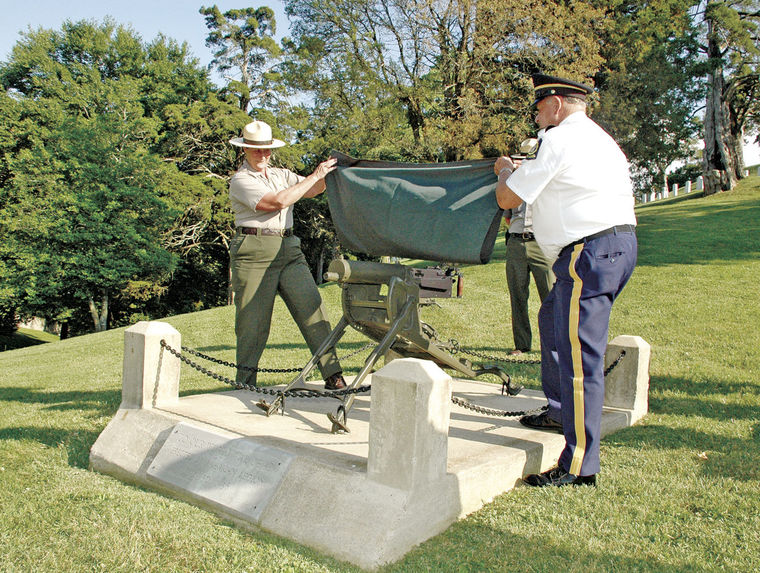Officials at the Andrew Johnson National Historic Site sent a World War I-era machine gun to Harper’s Ferry, West Virginia, to be restored. It has stood at the entrance of the Andrew Johnson National Cemetery for 80 years.
The gun was captured from the Germans by U.S. forces during World War I. It was installed at the entrance to the cemetery by the American Legion on May 30, 1936.
This year, the gun was refurbished by conservator David Arnold at the NPS Harper’s Ferry Conservation Center. The refurbished weapon was unveiled and rededicated during a special ceremony.
Lizzie Watts, Andrew Johnson National Park Service Superintendent, and American Legion Post No. 64 Commander Grady Barefield handled the unveiling.
Kendra Hinkle, the Andrew Johnson National Historic Site museum curator, gave a brief history of the weapon that “helped to change the face of warfare forever.”
Sir Hiram S. Maxim invented the first machine gun in 1884. The weapon displayed at the Andrew Johnson National Cemetery is a Maxim MGO8 built in 1908. World War I was a proving ground for the machine gun, biplane, and tank.
“Previously, the cavalry would rout formations of foot soldiers. The machine gun, however, forced entire legions of soldiers to ‘dig in.’ They constructed long networks of trenches for whatever offensive lay ahead,” she said.
It took four men to operate the machine gun. There was “the gunner who would also carry the gun; a soldier to carry the sledge mount, another to handle the ammunition, and a final soldier to lug the water canister and tubing to cool the barrel,” Hinkle said.
During the refurbishment, the gun was examined with microscopic analysis to determine the original paint color. The analysis found that the gun didn’t “appear to have a speck of original paint on it”.
Arnold reached out to military museums in Canada and the U.S. to find out what color paint was used on their guns. “He discovered that instead of the flat back, which the gun was before, the mount and water jacket would have been one of a range of field gray — or feldgrau,” Hinkle explained.
They then received color parameters in photographs from the museums. Arnold had a firm in St. Louis formulate the proper paint and primer. With its new coat of paint and improved UV protection, the gun should be able to be displayed for another 40-50 years.
